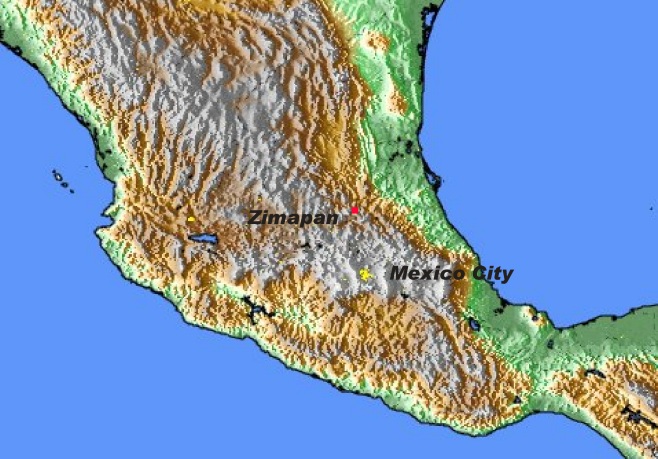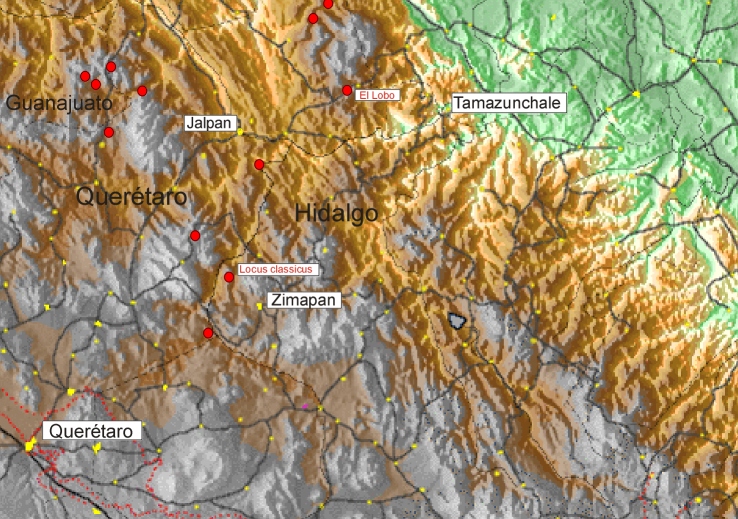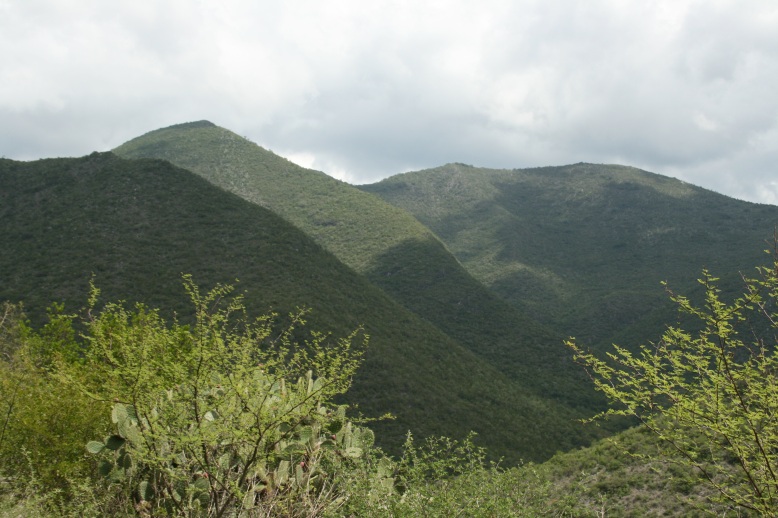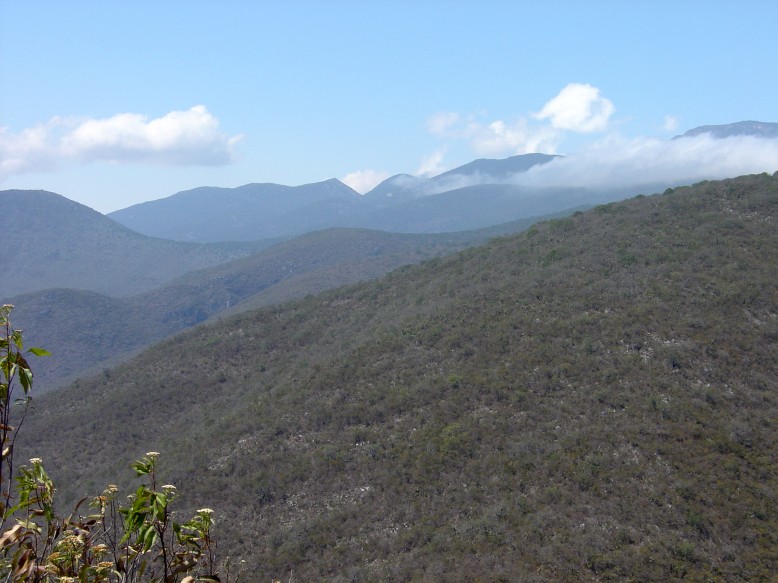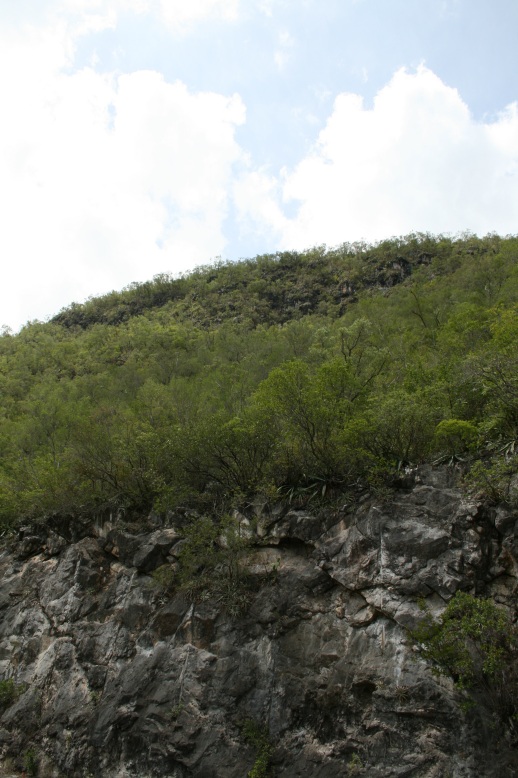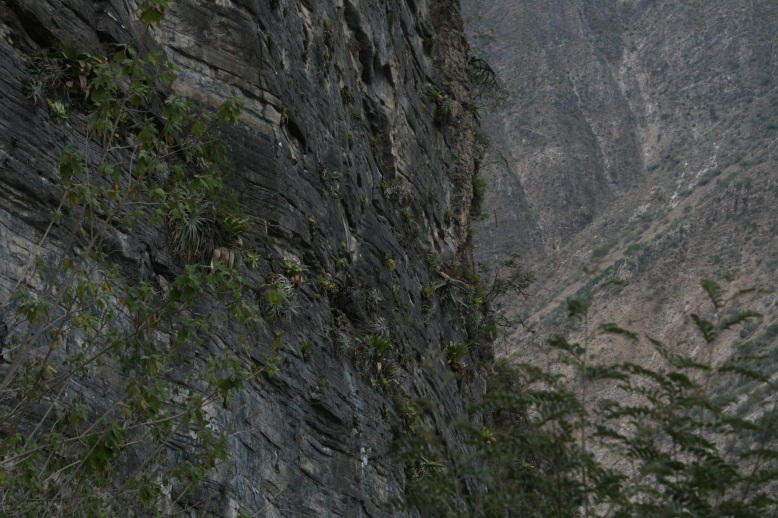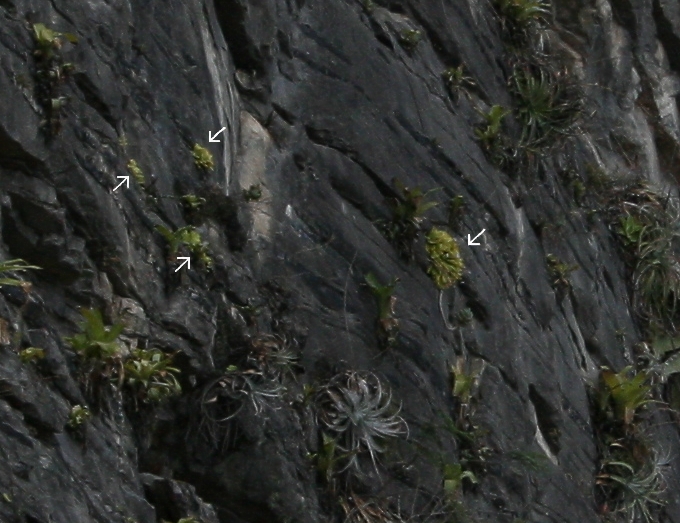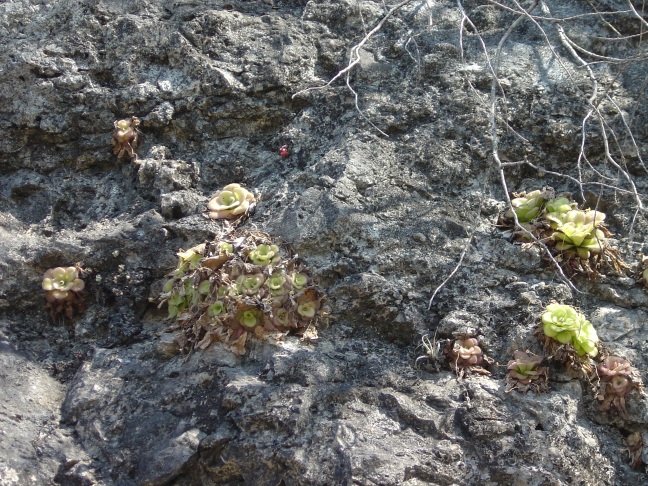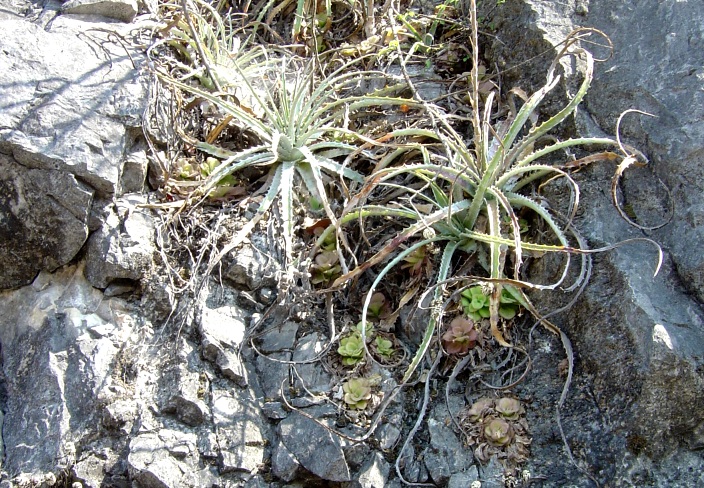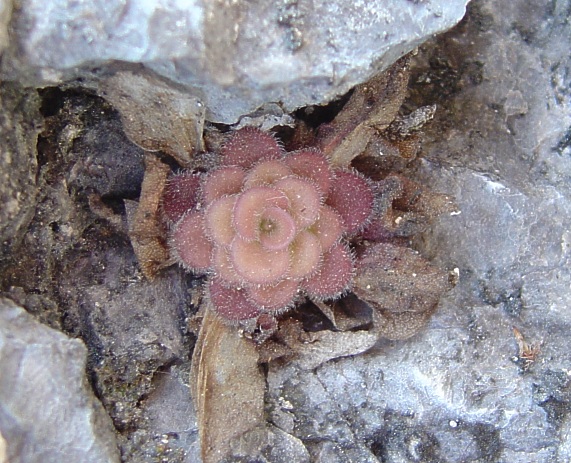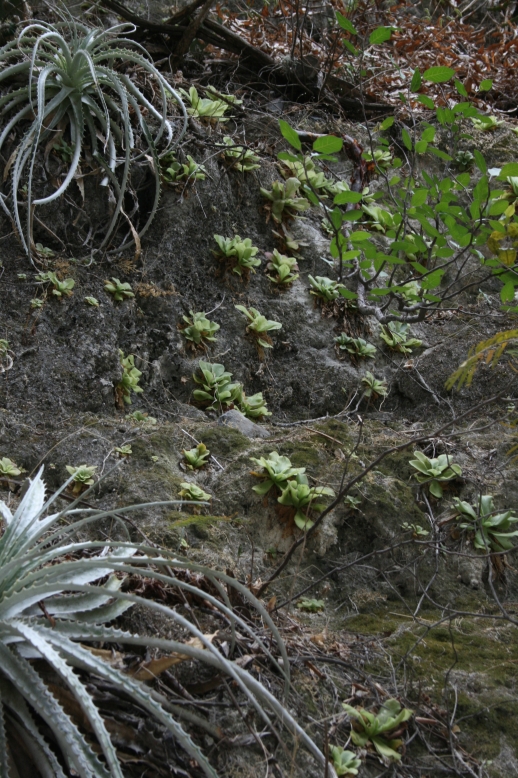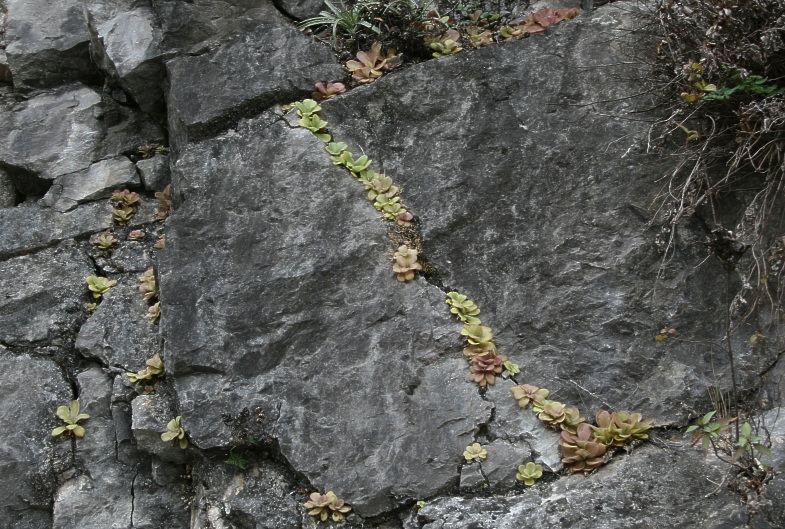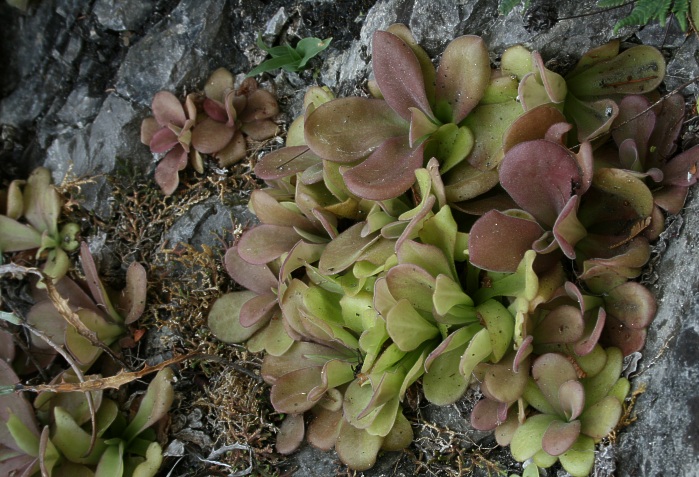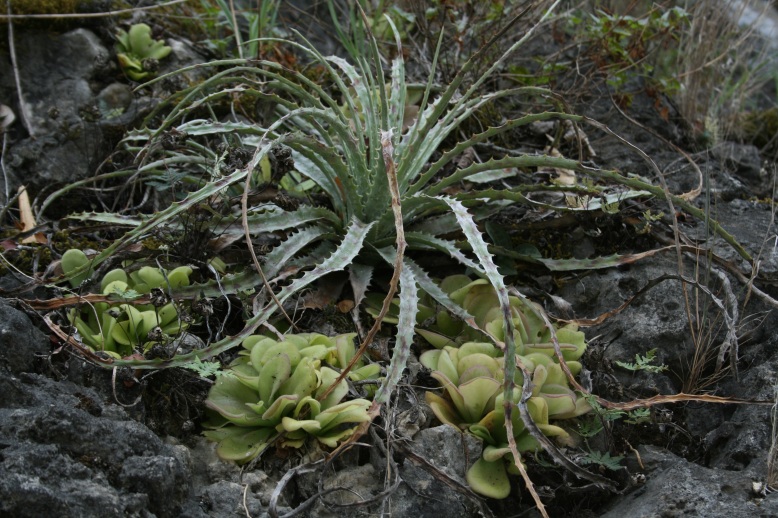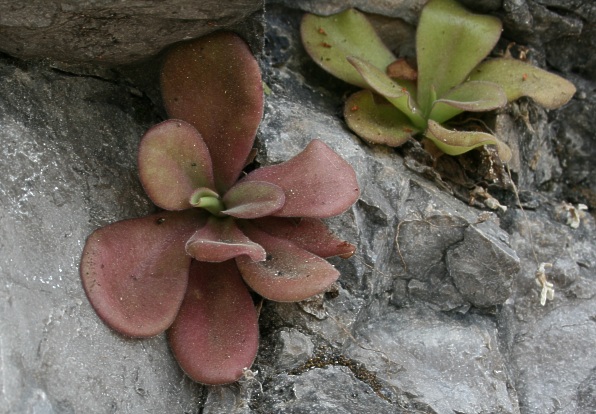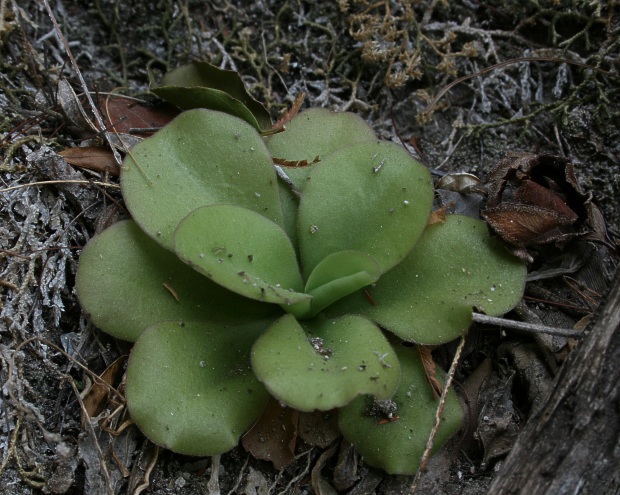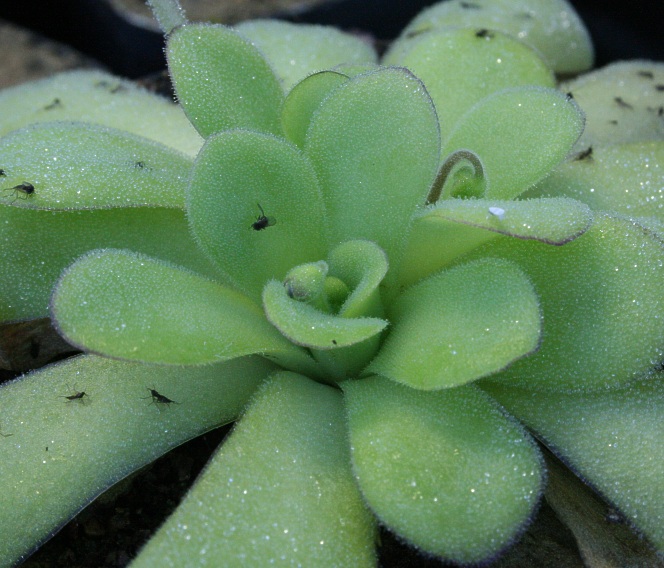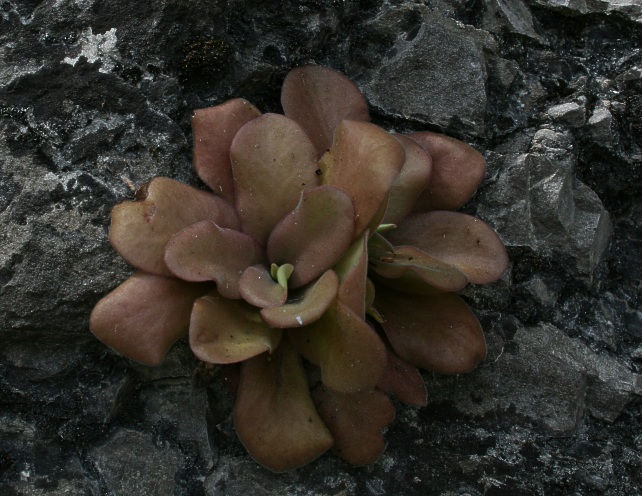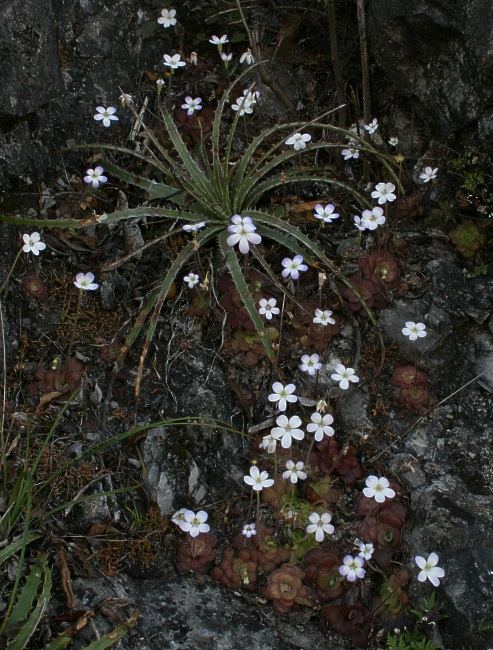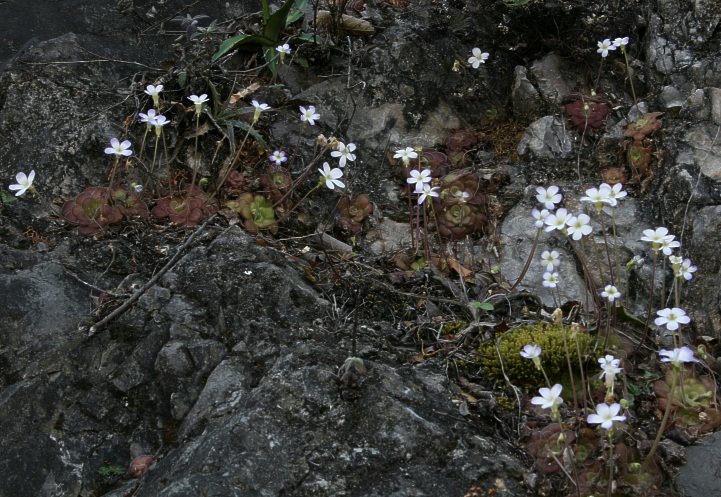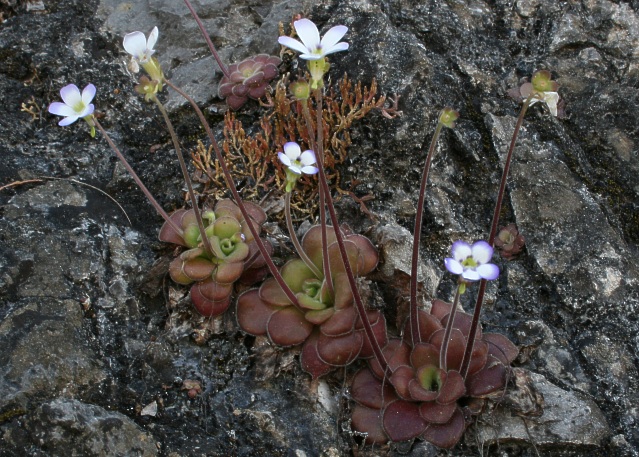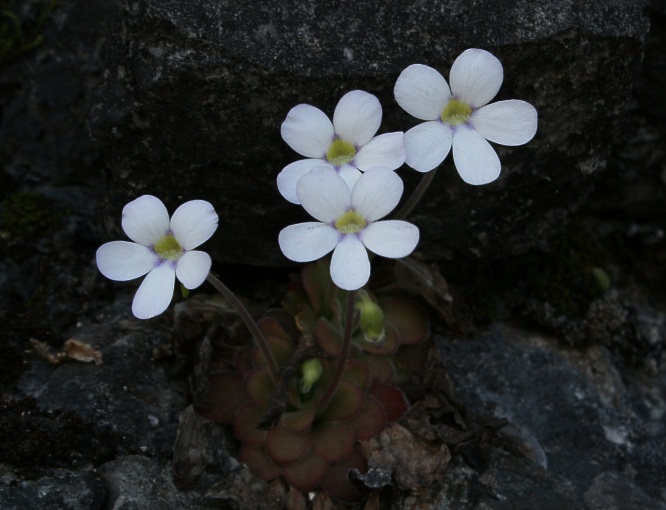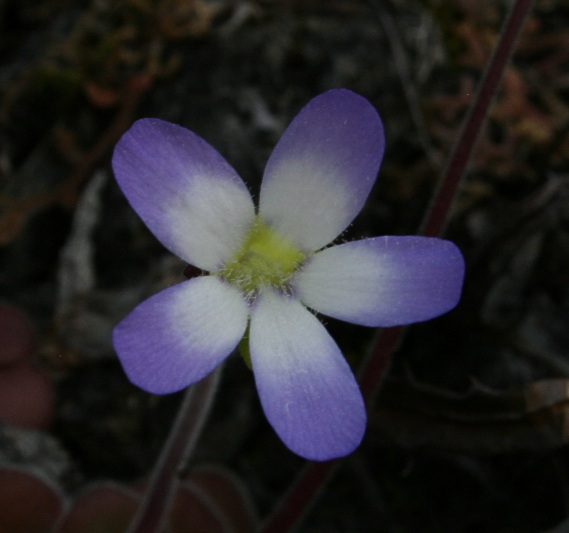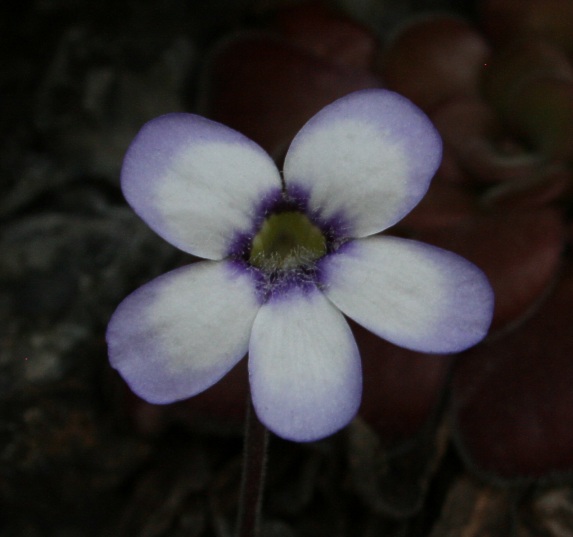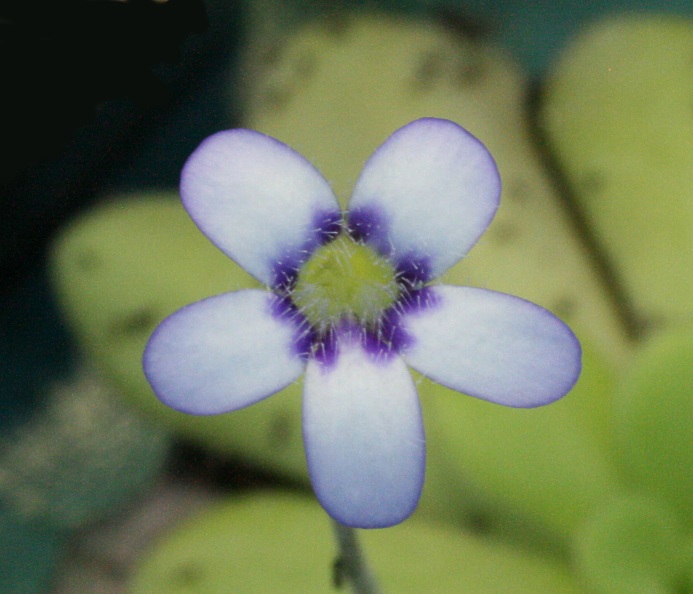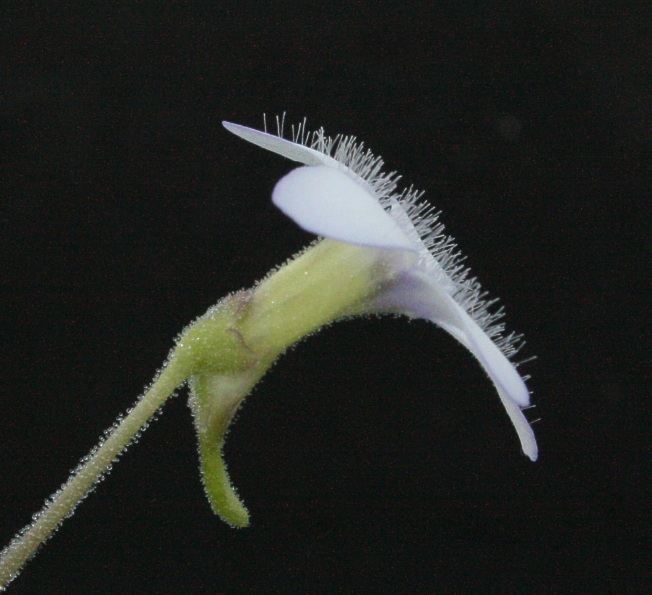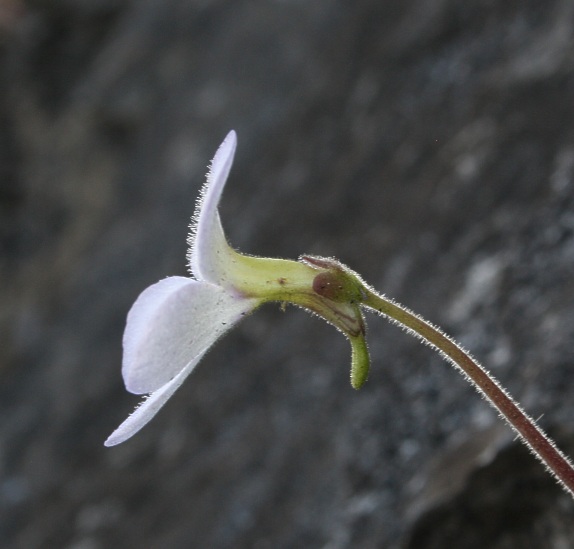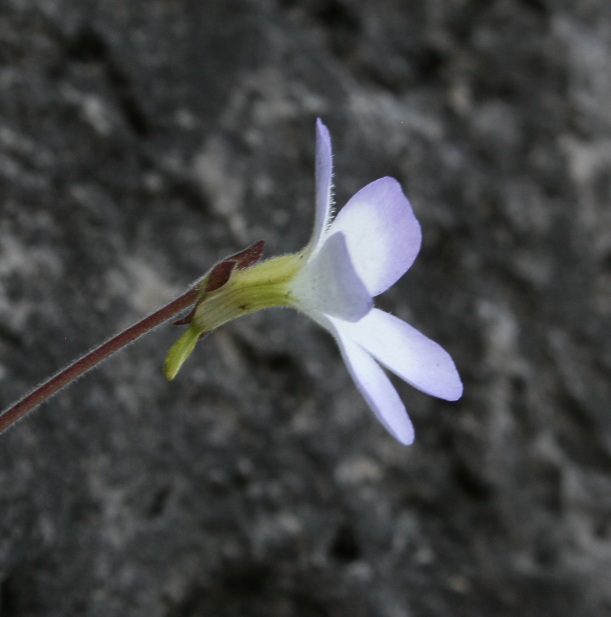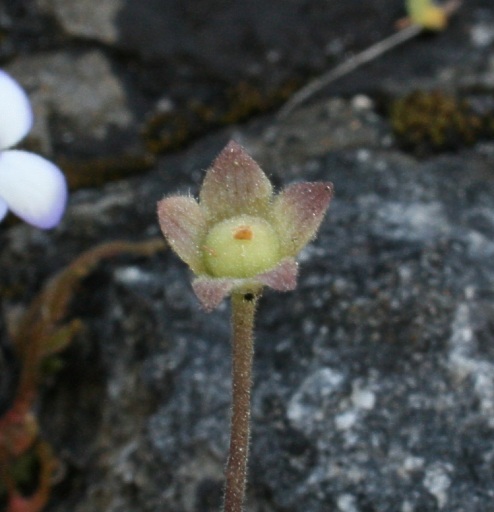
Oliver Gluch's World of Carnivorous Plants or: "What you always wanted to know about butterworts" |
| Impressum |

| Home | Origin | Prey | Species | Plant Purchase | Other Carnivorous Plants | Info about Carnivorous Plants | About me |
Pinguicula agnata Casper (1963)Topographic
map
of
Central Mexico with the location of the city of
Zimapán, state of Hidalgo.
Topographic
map
with all known locations of P.
agnata (red dots) in the Mexican states of
Hidalgo, Querétaro and Guanajuato. Plants collected from
the "locus classicus" (located northeast of
Zimapán) served for the species description.
Landscape
south
of the Sierra Gorda close to the village of El Lobo in
the state of Querétaro with a typical vegetation of a
"mattoral submontaneo" during the rainy season.
26th August 2009 Landscape
south
of the Sierra Gorda during the dry winter season. The
only humidity available for the plants during this
season does come from morning fogs or clouds coming
down from the mountains into the valley. As most of the
shrubs and bushes are deciduous and therefore lose its
foliage over winter, the lanscape gives a quite bleak
impression.
4th May 2005 Typical
habitat
of P. agnata (here along the road from
Xilitla to Landa de Matamoros close to the village El
Lobo, at an elevation of about 1600 m). Plants grow on
vertical calcareous cliffs. Close by to that site there
is also P. moranensis occuring.
26th August 2009 "Locus
classicus"
of P. agnata on steep, vertical, calcareous
cliffs above the Tolimán river canyon north of the city
of Zimapán in the state of Hidalgo. The species was
described based on plants collected from this site (but
collected from more accessible places).
29th August 2009 P.
agnata
plants on vertical cliffs above the Tolimán river. Only
few seeds do make it to establish and grow in
crevices or on mosses. As plants tend to divide from
time to time, there are often a group of
plants together at one spot.
29th August 2009 Plants
in
winter rosette at the location of "El Lobo". Around the
winter rosettes there are still the dried summer leaves
visible.
4th May 2005 Beside
P. agnata there are only few other plant species,
like cacti or succulents (here a Hechtia
species), that can grow permanently under those
conditions on the vertical cliffs. Humidity from morning
dew or from clouds appearing in the afternoon is the
only source of water for the plants at this time of the
year.
4th May 2005 Red
to
salmon coloured winter rosette of P. agnata at
the "El Lobo" site. During the dry season the winter
rosette is compact and the leaves are shorter compared
to summer leaves. The upper surface of the leaves are
densely covered with white hairs. Those hairs probably
also serve to collect humidity from the air.
4th May 2005 Winter
rosettes
(in culture).
Plants
of
P. agnata in summer rosettes in the "Barranca de
Tolimán" (Tolimán canyon) 2 to 3 m above the river
bed (1300 m above sea level). Due to very dry conditions
at the time point of visit the summer leaves were quite
soft and thin (probably due to lack of humidity).
29th August 2009 Plants
are
using any opportunity in crevices or mosses to grow on
those vertical cliffs.
26th August 2009 In
comparison
to the winter leaves, the summer leaves are much longer
and broader and the plants do form more lose rosettes.
The margin of the leaves is flat or at the outer part
sometimes slightly turned downwards.
26th August 2009 Summer
rosettes
of P. agnata growing under Hechtia
plants at the location "El Lobo".
26th August 2009 Despite
identical
growing conditions, the leaf colour can vary
significantly, which indicates that the leaf colour is
not only depending on environmental conditions but
impacted also by genetical factors.
26th August 2009 P.
agnata in summer rosette at the location "Barranca
de Tolimán" close to the river bed. Due to the more
shady conditions leaf colour is only green. In the
vicinity of that population also P. elizabethiae can be found.
29th August 2009 Carnivorous
summer
leaves and flower buds from a clone from "Barranca de
Tolimán" (in cultivation). When plants are cultivated
under more humid conditions during winter time, plants
rarely do form winter leaves.
25th December 2009 Summer
rosettes
with red-brown leaf colour at the location "El Lobo".
26th August 2009 Colony
of
flowering plants out of winter rosettes at the
location "El Lobo".
17th February 2015 The
species
is flowering only during the dry season between November
and March. Only sporadically flowers can occur also from
the summer rosette.
17th February 2015 Per
season
there are mostly 4 to 5 flower scapes apperaring.
17th February 2015 Flowers
with
oblong-obovate, almost white petals and with pale violet
dots at each side of the base of the petal.
17th February 2015 Front
view
of a flower which petals that are coloured in deep
violet in the outer half of the lobe.
17th February 2015 Front
view
of a flower that does not have only violet spots at each
side of the base of the lobe, but where the whole base
is of violet colour.
17th February 2015 Front
view
of a flower from a clone from "Arroyo Tolimán" (in
culture). The petals do have an intense violet
coloration of the base of the lobes and are the base of
the petal is densely covered with long white hairs which
do continue into the throat.
25th December 2009 Side
view
of a flower from a clone "Arroyo Tolimán" (in culture).
The upper surface of the petals are densely covered with
long white hairs. Flower scape, calyx, tube as
well as the spur are densely covered with stipitate
glandular hairs.
17th February 2015 Lateral
view
of a flower at the location "El Lobo". The almost
cylindrical tube has mostly a white to
yellow-green colour. Some flowers do show also a
red-violet veination on the outside of the tube.
17th February 2015 Some
flowers
have sepals that do protrute from the corolla tube. The
spur has an obtuse tip and is of a light green
colour.
17th February 2015 Immature
seed
capsule. The seed capsule is globular and is surrounded
by the 5 sepals of the calyx. Calyx lobes are acute
ovate with obtuse or pointed tips.
17th February 2015 |
